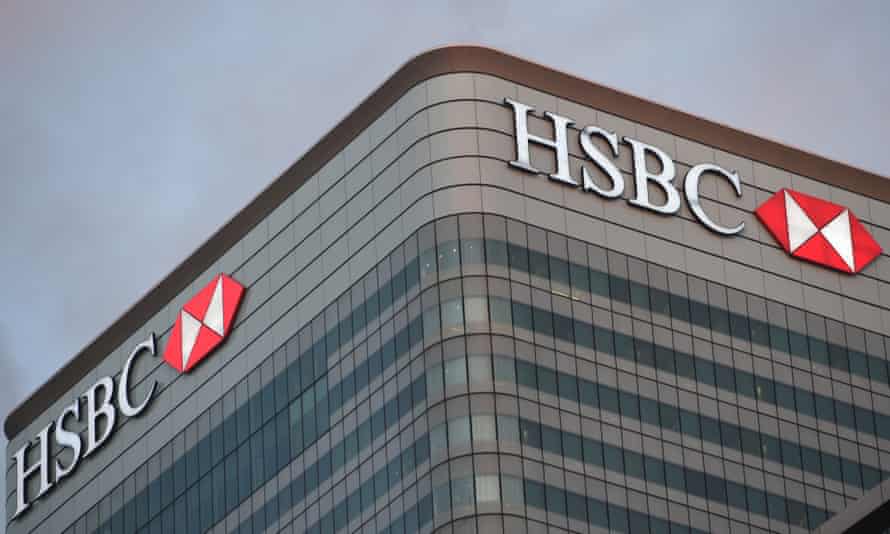HSBC Takes The Slow Boat To China
A much-anticipated strategic update continues the bank’s frustratingly slow pivot toward Asia, only with lower shareholder returns.
Another year, another familiar-sounding strategic update at HSBC. The behemoth’s need to reiterate its pivot to Asia underlines what a slow, awkward process it is.
The London-headquartered, China-focused bank announced full-year results on Tuesday. As at peers, revenues were hit by lower interest rates globally and chunky allowances for pandemic-related loan losses. Unlike at investment-banking rivals, the bump in trading revenues from HSBC’s own trimmed-back business was a meagre offset. A much-anticipated new strategy amounted to more of the same—except for lowered shareholders returns.
The shares fell in early trading, extending a year of underperformance. For much of the past decade the stock has traded at a premium to most European peers because of HSBC’s strong business in Hong Kong and mainland China, both profitable, fast-growing markets. But that gap has narrowed considerably in the past year, likely for two main reasons: Investors want faster organizational change, and they are concerned that HSBC’s trademark business model of bridging East and West is getting more difficult.
The bank broadly delivered on its 2020 targets. However, return on tangible equity or ROTE fell to just 3.1% from 8.4% a year earlier, and dividends were suspended at the British regulator’s request. The pandemic seems a valid excuse. The real disappointment was in its guidance for future returns. Target ROTE has been reduced and delayed, even with an additional $1 billion in cost cuts. Dividend expectations were pared back too: The growing quarterly payment has been replaced with a 40% to 55% payout ratio, possibly topped up with buybacks or special dividends.
Strategically, the bank is still focused on shifting more assets from Europe and the U.S. into Asia, as well as increasing its wealth management business and making its operations more digital. The direction of travel makes sense, but the pace remains frustratingly sedate, particularly as competition in the region is picking up. Discussions continue about long-mooted exits from retail operations in France and the U.S.
The speed of change might accelerate under Chief Financial Officer Ewen Stevenson, who was put in charge of the new overhaul. A relative outsider, he joined HSBC in 2019 from RBS, now known as NatWest, where he led a far-reaching revamp of what was once the largest bank in the world by assets.
HSBC’s shares are also weighed down by geopolitics. Management says little on the topic of Sino-American relations, except to highlight a long history of successfully bridging international divides. That discretion may be the best way to juggle conflicting priorities, but does little to assuage investor concerns that its dual identity may eventually become untenable.
The bank has no good answers to geopolitical questions, giving it all the more reason to address organizational ones. For a company that makes much of its position in exciting high-growth Asian markets, HSBC’s expected returns are surprisingly modest. For its shares to regain their old lustre, that needs to change.
 Copyright 2020, Dow Jones & Company, Inc. All Rights Reserved Worldwide. LEARN MORE
Copyright 2020, Dow Jones & Company, Inc. All Rights Reserved Worldwide. LEARN MORE
This stylish family home combines a classic palette and finishes with a flexible floorplan
Just 55 minutes from Sydney, make this your creative getaway located in the majestic Hawkesbury region.
More than one fifth of Australians are cutting back on the number of people they socialise with
Australian social circles are shrinking as more people look for ways to keep a lid on spending, a new survey has found.
New research from Finder found more than one fifth of respondents had dropped a friend or reduced their social circle because they were unable to afford the same levels of social activity. The survey questioned 1,041 people about how increasing concerns about affordability were affecting their social lives. The results showed 6 percent had cut ties with a friend, 16 percent were going out with fewer people and 26 percent were going to fewer events.
Expensive events such as hens’ parties and weddings were among the activities people were looking to avoid, indicating younger people were those most feeling the brunt of cost of living pressures. According to Canstar, the average cost of a wedding in NSW was between $37,108 to $41,245 and marginally lower in Victoria at $36, 358 to $37,430.
But not all age groups are curbing their social circle. While the survey found that 10 percent of Gen Z respondents had cut off a friend, only 2 percent of Baby Boomers had done similar.
Money expert at Finder, Rebecca Pike, said many had no choice but to prioritise necessities like bills over discretionary activities.
“Unfortunately, for some, social activities have become a luxury they can no longer afford,” she said.
This stylish family home combines a classic palette and finishes with a flexible floorplan
Just 55 minutes from Sydney, make this your creative getaway located in the majestic Hawkesbury region.





















